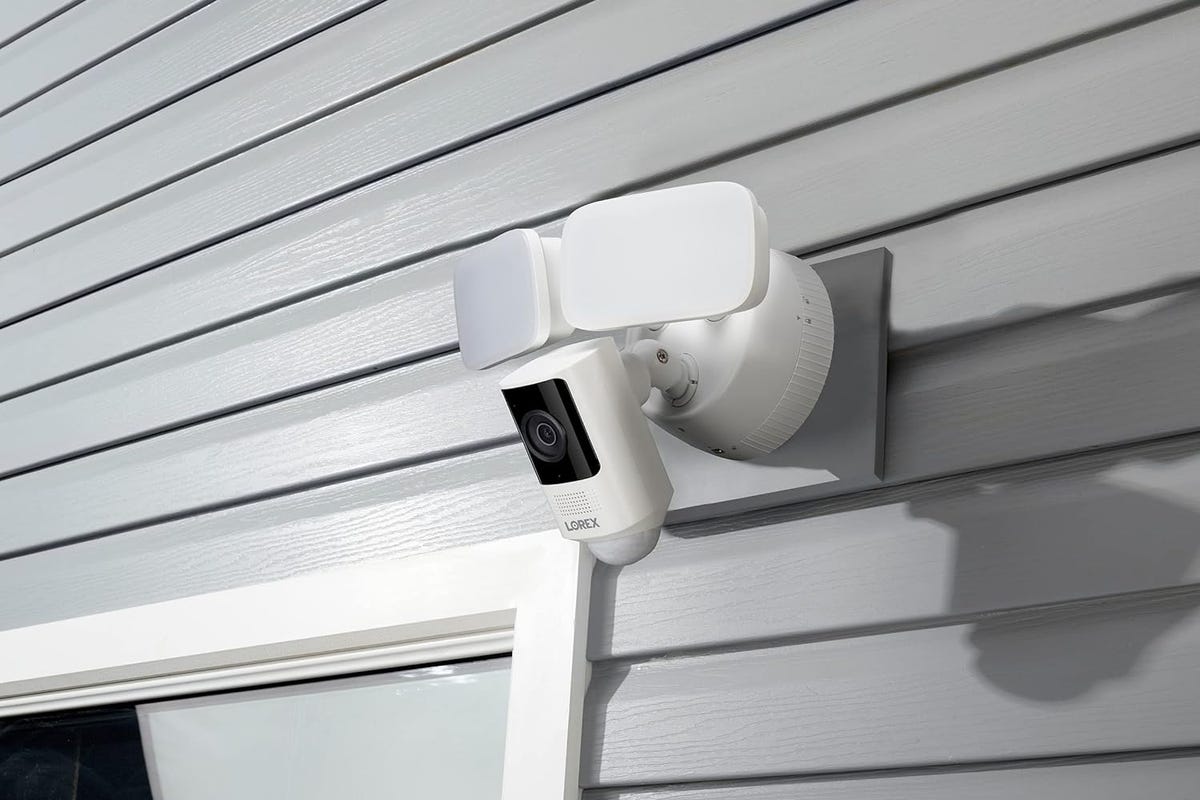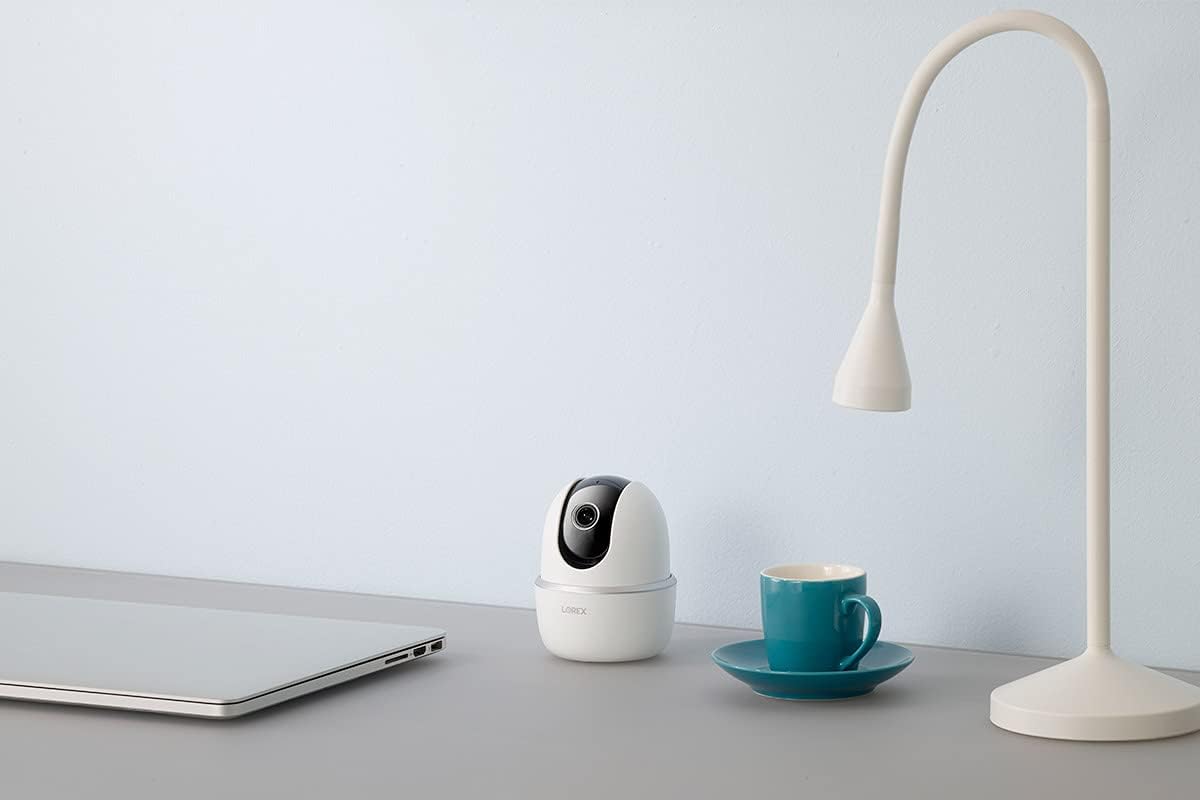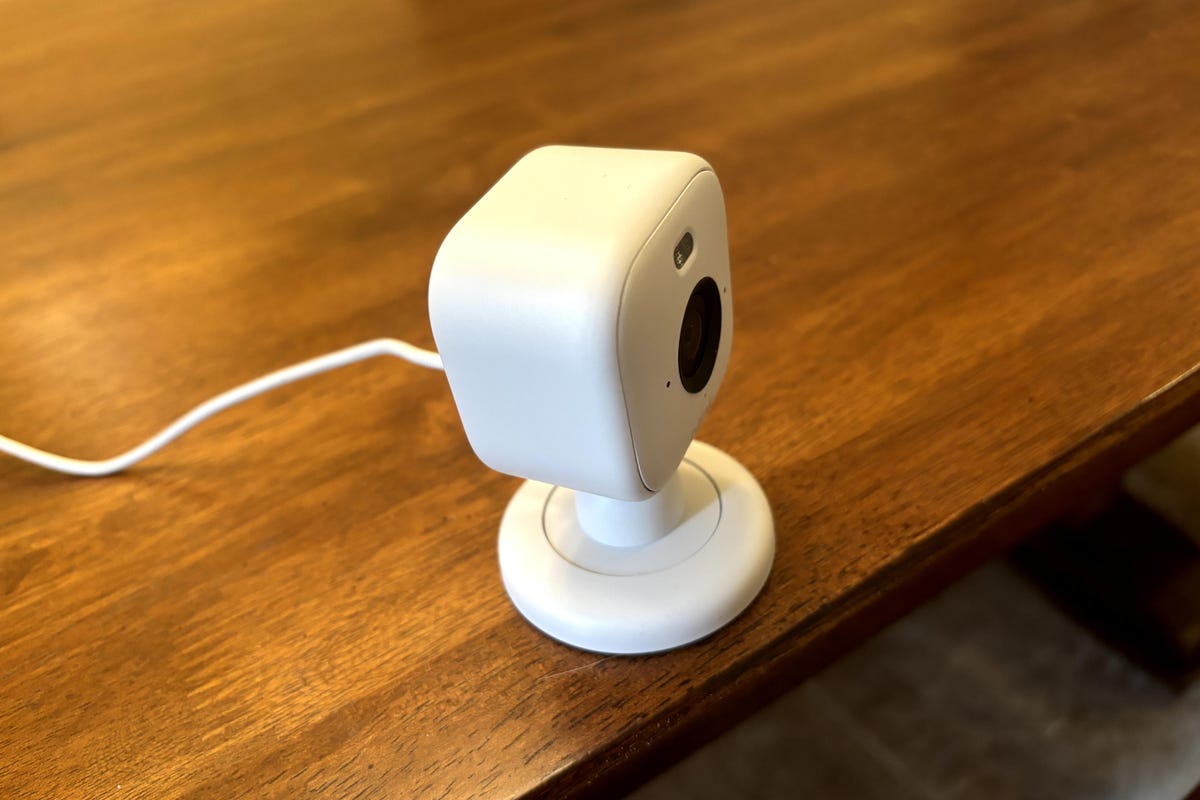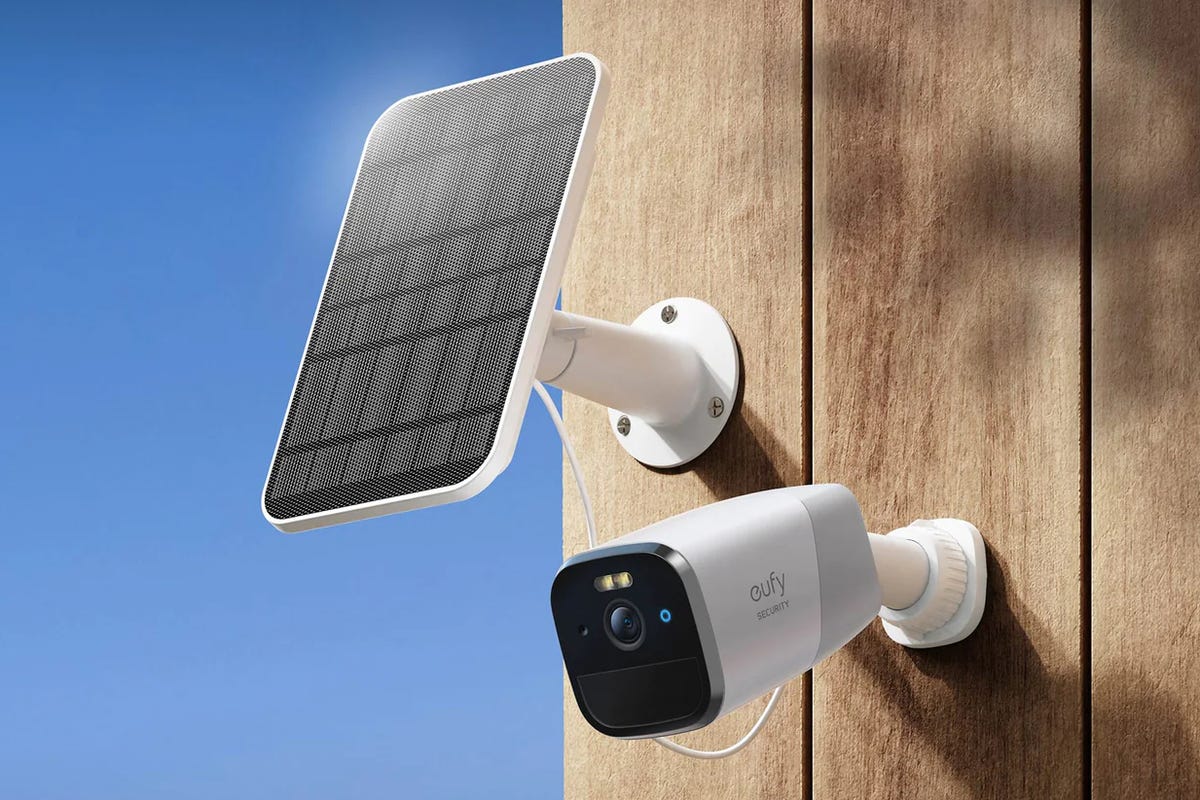Tech News
Best Home Security Cameras Without a Subscription for 2024 - CNET
 Why
You
Can
Trust
CNET
Why
You
Can
Trust
CNET
Many home security companies are pushy with subscriptions. These cams give you the features we find especially important, without any monthly fees.

Lorex is a popular choice for buyers who want to stay off the cloud and away from subscriptions.
Lorex/AmazonWhat's the best subscription-free home security camera?
Our experts have spent over 150 hours testing multiple kinds of indoor and outdoor security cams, including dozens of cameras that don't require those annoyingly common subscription fees: Our top pick for a no-fee camera that still does everything is the Eufy Indoor Cam S350. From close-in zooming to human and pet detection, this home security cam has an excellent assortment of features with a focus on local storage and zero subscriptions.
Eufy's cam is an indoor-only model, but don't worry if you've got grounds to keep watch over. We've also picked top options for outdoor and floodlight cams, as well as budget models to save even more money -- all offering key features like video storage without the need for a cam subscription, which usually starts at $5 to $10 per month. If you've got saving money on your mind, take a minute to stop by our guide to the best cheap home security systems and budget video doorbells too.
The best home security cameras without subscriptions
Best home security cameras without subscriptions compared
Best Home Security Cameras Without Subscriptions Compared
| Best security cams without subscriptions | Eufy Indoor Cam S350 | Lorex 2K Indoor Camera | Reolink Argus Track Cam | TP-Link Tapo C120 Indoor/Outdoor Cam | Lorex 2K Wi-Fi Floodlight Security Camera | Blink Outdoor 4 with Sync Module 2 |
|---|---|---|---|---|---|---|
| Price | $100 | $50 | $210 | $40 | $250 | $65 |
| Resolution | 4K/2K | 2K | 4K | 2K | 2K | 1080p/HD |
| Field of view | 360 degrees with pan/tilt | 125 degrees | Nearly 360 degrees with pan/tilt | 120 degrees | 122 degrees | 143 degrees |
| Power source | Wired | Wired | Battery with solar | Wired | Wired | Battery |
| Motion detection | Motion, people, pets | Motion, people | Motion, people, vehicles, animals | Motion, people, pet vehicle | Motion, people, vehicle, animal | Motion only with no subscription |
| Night Vision | 32-foot night vision | Yes | Color night vision | Color night vision | Color night vision | Yes |
| Audio | Two-way audio | Two-way audio | Two-way audio | Two-way audio | Two-way audio | Two-way audio |
| Storage options | Local with microSD card or Eufy HomeBase | Local with included microSD card | Local with microSD card | Local via microSD card or cloud storage with subscription | Local via microSD card (included) | Local via Sync Module 2 Hub |
| Voice assistant | Apple HomeKit/Home/Siri | Amazon Alexa, Google Assistant | Amazon Alexa, Google Home/Assistant | Amazon Alexa, Google Home/Assistant | Amazon Alexa, Google Assistant | Amazon Alexa |
| Review score | N/A | N/A | N/A | N/A | N/A | N/A |
Other home security cams without subscriptions that we've tested

Lorex's pan/tilt camera makes for an excellent nanny cam in the right position.
Lorex/AmazonTP-Link Tapo C210: This is one of our favorite affordable cameras at the moment, but we prefer Eufy's better specs that also come with local storage.
Blink Mini 2: The Blink Mini 2 has a surprising amount of features for its small size and affordable price (plus outdoor compatibility), but it's a little too short range and the required Sync Module 2 for local storage greatly increases the price.
Google Nest Indoor/Outdoor cam: Nest doesn't have any local storage options, and the 3 hours of video storage means you need to act quickly, so it's a complicated compromise for those who want to avoid subscriptions altogether. We went with simpler, local storage approaches for this list.
TP-Link Tapo C310: The C310 makes a fine outdoor camera ready for a microSD card, but we found Tapo's indoor/outdoor camera a little more useful for the average person.
Google Nest Doorbell: The Nest Doorbell is an excellent device that benefits greatly from Google AI and Nest's high-quality construction, but it also doesn't have any local storage, so you'll have to that three-hour limit.
Lorex 2K Indoor Pan/Tilt Camera: This Lorex cam is an excellent local storage alternative, but ultimately we chose the floodlight model for its great outdoor usability.
Factors to consider when buying a home security camera

Blink's person detection works well enough, but it's a subscription-only feature.
CNET/Tyler LacomaResolution and view
We always pay attention to resolution and field of view for home security cameras. Checking detail, up close and at a distance, is very important for live views and the quality of recorded video. It's important to pay attention not only to resolution numbers and how wide the field of view is but if a brand locks higher resolutions behind a subscription (some do).
Video storage
Video storage refers to how easily video can be recorded and shared, typically either in the cloud or locally through an attached hub/hard drive. Cloud storage is almost always locked behind a subscription except in rare exceptions like Google Nest and some others. Local storage is generally a better way to avoid subscriptions and still get this important quality of life.
Smart home integration
Smart home support for voice assistants (Siri, Alexa, Google Assistant) or platforms like Google Home or Apple Home aren't often locked behind subscriptions: What you see in the specs is what you get. That can be limited to a single platform (Amazon likes to keep its devices focused on Alexa for now) or spread out between several platforms. If you already use a voice assistant or a full smart home security system, look for a cam that's compatible with it.
Object detection
Object detection, like recognizing packages or human-shaped beings approaching, is another feature often locked behind a subscription. Some cameras offer free object detection. Eufy uses human detection for many of its cams, TP-Link Tapo cams offer some free detection and several Lorex cams provide package and people detection.
App usability
High-quality secure cams come with apps that are intuitive with settings that are easy to manage. It's also a big bonus if they don't have constant pop-ups telling you to sign up for a subscription.
Night vision
We always take a close look at night vision and its distance to make sure that it's working properly and offers plenty of utility for capturing images on the other side of your yard or room.
Two-way audio
Two-way audio features help scare away intruders, talk to strangers or tell the kids to get inside for dinner. They're always free, but we take a close look at their quality and range, too.
How we test security cameras
Our experts follow a complete testing process that examines how all the features on a home security camera function. Today’s cams have motion detection, audio communication, resolution, night vision, object recognition and much more to test.
We walk through these features with a number of visual and audio experiments to see how cams match their claims -- and the capability of comparative models. There’s a lot that goes into this process, and you can catch plenty more details over at our guide on how we test.
The best home security cam placement and installation

Eufy's solar panel makes a great pairing with this open-range security cam.
EufyPlacing a home security camera is one of the hardest decisions today's DIY cameras require. Every home is different, so you'll need to customize the location to get the best angle to capture a room or yard. Sometimes central locations are best for pan/tilt cameras or a high shelf for an overview. For installation, we like the stability of a screw-in mount or the versatility of a horizontal surface. For more, take a look at our guide on the best spots to install home security cameras.
Security camera FAQs
That can vary from subscription to subscription, but there are expectations in common. Companies like Ring, Arlo and others lock their cloud video storage features in subscriptions, and while there are sometimes local workarounds, they’re rarely convenient or cheap. Advanced object detection is frequently accessed only through subscriptions, as are “rich” notifications and alerts that provide more detail about what’s happening. Certain video features, like extended live views, snapshot timelapses or home/away modes can also be trapped in subscriptions.
More advanced subscriptions typically expand the plan for multiple devices and may add in professional home monitoring and similar services.
They’re getting more affordable all the time. You can find a 256GB (a massive amount of storage for a home security camera) microSD card for under $20 these days. Smaller cards will cost significantly less.
If you like keeping and accessing your video in the cloud, you’ll probably have to pay a subscription. Free cloud storage does exist, but it’s hard to find. Google’s Nest cams offer free video storage for 3 hours, but you’ll need to act within that timeframe to save the video, so you’ll need to check alerts fast.
That depends how often and long it records. A 32GB card like the one Lorex provides in some cams can record for a few hours at 1080p, much less at higher resolutions. Upgrading to a larger card means you don’t have to worry about deleting videos as often.
NAS stands for network-attached storage and is often used in conjunction with NVR or Network Video Recorder. An NVR is similar to a DVR, except it records footage from your cams. NAS storage like this is typically used for large security systems with an array of cams that records a lot of footage and needs a central database to store and view it. An NVR isn’t necessary for the average home security system with local storage.
When you subscribe to the blog, we will send you an e-mail when there are new updates on the site so you wouldn't miss them.



Comments